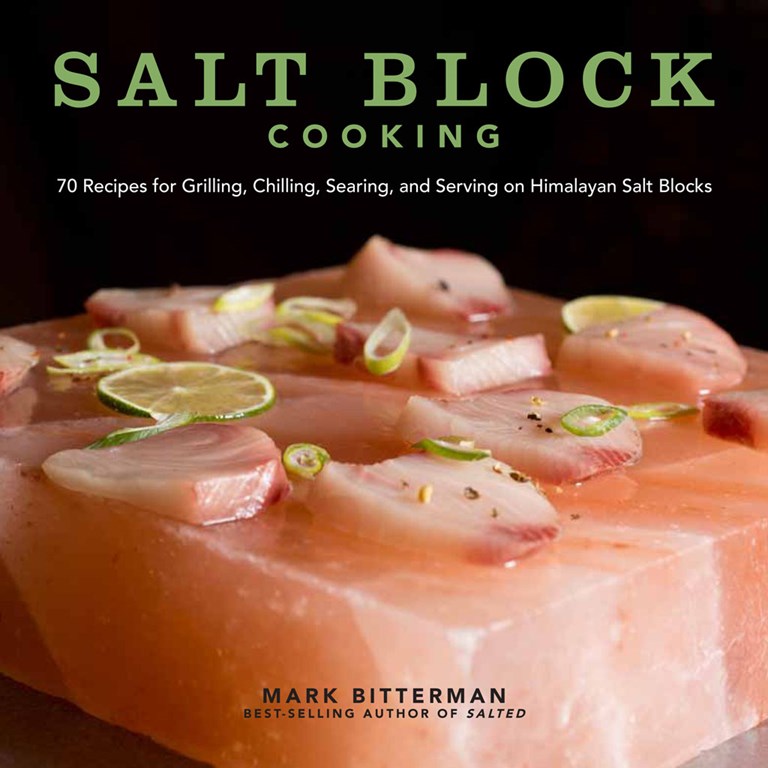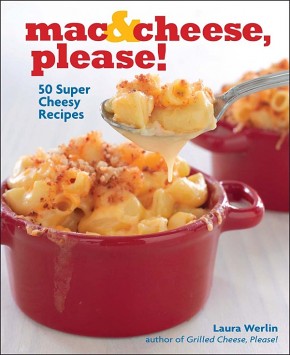Salt Block Cooking70 Recipes for Grilling, Chilling, Searing, and Serving on Himalayan Salt Blocks
A precious mineral mined from ancient hills deep in Asia has stormed the American cooking scene. With crystals of rose, garnet, and ice, Himalayan salt blocks offer a vessel for preparing food as stunningly visual as it is staggeringly tasty.
Guided only by a hunger for flavor and an obsession with the awesome power of salt, award-winning author Mark Bitterman pioneers uncharted culinary terrain with Salt Block Cooking, which provides simple, modern recipes that illustrate salt block grilling, baking, serving, and more.
Everyone who loves the excitement and pleasure of discovering new cooking techniques will enjoy this guide to cooking and entertaining with salt blocks. The introduction is your salt block owner’s manual, with everything you need to know to purchase, use, and maintain salt blocks with confidence. The chapters that follow divide seventy recipes into six techniques: serving, warming, curing, cooking, chilling, and of course, drinking. You’ll find recipes ranging from a minty watermelon and feta salad to salt-tinged walnut scones, beef fajitas served tableside, salt-cured candied strawberries, and salt-frozen Parmesan ice cream!
This book is the definitive text on Himalayan salt blocks, written by the man who wrote the definitive text on salt. Enough with salting your food—now it’s time to food your salt!
“Mark Bitterman knows more about salt than anyone else on the planet. If you’ve ever wondered what to do with those handsome slabs of Himalayan salt you see at cookware shops, Salt Block Cooking will inspire you with wildly innovative uses you’ve never dreamed of, from cocktails to candy, from curing to grilling, and from ceviche to pizza. Along the way, you’ll learn the half-billion-year history of the only food that starts as a rock.”
––Steven Raichlen, author of the Barbecue! Bible series and host of Primal Grill on PBS
“Cooking on salt blocks will blow your mind, jump-start your creative process, make your food taste better, delight your friends, and cut down on the time you spend cleaning pots and pans. And what better guide for your new experience than Mark Bitterman, a man who has forgotten more about salt cookery than I will ever learn.”
––Andrew Zimmern, host of Bizarre Foods with Andrew Zimmern on the Travel Channel
“Salt Block Cooking is an essential guide to working with salt blocks. It opens readers’ eyes to possibilities never imagined before and gives a unique perspective on a completely new and interactive way to cook. Mr. Bitterman has changed the way I cook every day. He made me understand that salt is the most essential part of the seasoning process and is just as important as the ingredient itself. I encourage you to follow Mr. Bitterman’s lead and I promise you will never think about salt in the same way again.”
––Vitaly Paley, chef/owner of Paley’s Place Bistro and Bar, Imperial, and Portland Penny Diner; coauther of The Paley’s Place Cookbook
Salt and Pepper Semi-Cured Hamachi Sashimi
Salt Brick Grilled Chicken
Salt-Baked Rustic Apple-Onion Tart with Blue Cheese
Salt and Pepper Semi-Cured Hamachi Sashimi A cut of fish glistening from the sea asks that we honor it. Simple slices of pristine Hamachi can’t bear the insult of ornamentation, but they are exalted by salt. Resting fresh fish flesh on a chilled block of salt returns it momentarily to its birthplace, impregnating it with salinity, firming its muscularity. You will need very high-quality fish for this dish. If you have access to an Asian market, the fishmonger there can usually get you sushi-grade hamachi. Plan ahead, because it might have to be special-ordered. Yes, I know it is pricey, but ecstasy isn’t cheap.
A cut of fish glistening from the sea asks that we honor it. Simple slices of pristine Hamachi can’t bear the insult of ornamentation, but they are exalted by salt. Resting fresh fish flesh on a chilled block of salt returns it momentarily to its birthplace, impregnating it with salinity, firming its muscularity. You will need very high-quality fish for this dish. If you have access to an Asian market, the fishmonger there can usually get you sushi-grade hamachi. Plan ahead, because it might have to be special-ordered. Yes, I know it is pricey, but ecstasy isn’t cheap.
1 (9-inch) square or round salt block
1 pound sushi-grade yellowtail
flounder (hamachi)
2 Tellicherry peppercorns
4 dried green peppercorns
4 Szechuan peppercorns
1/8 teaspoon Aleppo pepper
2 scallions, roots and dark green ends
trimmed, thinly sliced
4 thin lime slices
MAKES 4 SERVINGS
Chill the salt block in the refrigerator for at least 2 hours.
Cut the yellowtail into .-inch-thick slices. Place the fish slices on the chilled salt block and refrigerate for 10 minutes. Then flip the pieces of fish so the other side comes in contact with the salt and refrigerate for another 5 minutes.
While the fish is curing, smash the Tellicherry, green, and Szechuan peppercorns with the flat side of a large knife, a meat pounder, or the bottom of a heavy skillet. Mix the peppercorns together with the Aleppo pepper.
To serve, scatter the pepper and scallions over the fish, and serve on the salt block with the lime slices. Squeeze a lime over the dish if desired, or save it for a salty lime dessert.
Makes 4 servings
Pollo al mattone is more soulful and elegant than its name—chicken grilled under a brick (a mattone is a heavy tile)—would lead you to imagine. Plain and delicious, with crisp skin and juicy meat, the dish is a staple of Tuscan cooking. Chicken halves are weighted as they grill, which brings the skin of the bird more uniformly in contact with the fire. Dehydration crisps the surface, but the center remains moist. A simple switcheroo reinvents and improves upon the traditional recipe’s quiet genius. By replacing the brick with a block of salt, you add a new dimension of seasoning and even increase the crisping—a second Tuscan Renaissance.
2 (4 by 8 by 2-inch) salt blocks
1 (4-pound) chicken, preferably free-range
2 tablespoons olive oil
4 garlic cloves, halved lengthwise
½ teaspoon coarsely ground black pepper
Juice of ½ lemon
Place the salt blocks on a grill grate of a gas grill over low heat, close the lid, and warm for 10 minutes while you prepare the chicken. Turn the heat to medium and heat the block for 10 more minutes. Its surface should be about 375°F. If you are using a charcoal fire, set up a bilevel fire with half the grill set up for low heat (one layer of coals) and the other half set up for medium heat (two layers of coals).
Remove and discard the neck and package of innards from the cavity of the chicken. Place the chicken, breast side down, on a cutting board. With a large knife or poultry shears, cut down the length of the spine on both sides. Remove the spine. Cut the breast side of the chicken in half lengthwise. You will now have two chicken halves.
Salt-Baked Rustic Apple-Onion Tart with Blue Cheese
The savory rustic tart is one of the biggest contributors to the good name of rustic food. The non-rustic version can’t beat it. No level of refinement, no phyllo dough crust, no olives and anchovies and herbs, not even calling it a pissaladière can tip the scales. Cooking it on a salt block elevates the tart without diminishing its essential rusticity. The salt block baking creates a crust as good as a wood-fired Neapolitan pizza, but with a little salt-shocked zing to help carry the caramelized apples and onions. Rustic, yes, but also perfect.
1 large salt block, at least 9 inches square and 1½ inches thick, tempered (see page 30)
3 large yellow onions, quartered and sliced
1 large tart apple, peeled, cored, and cut into thin wedges
2 tablespoons olive oil
Sel gris and freshly ground black pepper
1 ½ cups unbleached all-purpose flour
4 ounces (1 stick) unsalted butter, cut into small pieces
¼ cup cold milk
Handful of cornmeal
1 ounce blue cheese, crumbled
Makes 8 Servings
Place the tempered salt block on the bottom rack of the oven (see Read Before Heating!, page 25). Turn the oven to 350°F, and heat the block for 20 minutes. Turn the oven to 400°F and heat for another 25 minutes.
Toss the onions, apple, and oil on a large rimmed baking sheet. Season with salt and pepper to taste, and bake for 30 minutes, or until lightly browned and soft.
Meanwhile, make the pastry by combining the flour, butter, and a pinch of black pepper in the work bowl of a food processor. Process in pulses until the butter is uniformly cut into the flour; add the milk and keep processing until the mixture is moist and climbs the side of the bowl. Remove the dough from the processor and pat together into a flat disk. Roll on a lightly floured board into a rough disk about 14 inches across and ¼ inch thick.
Sprinkle a rimless baking sheet or a pizza peel with cornmeal. Place the pastry disk on the cornmeal-covered surface. Mound the apple and onions in the center of the pastry and flatten into a 9.-inch circle. Fold the edges of the dough over the filling; some of the filling in the middle will remain exposed. Slip the tart from the pan onto the hot salt block. Bake for 25 to 35 minutes, until browned and crisp. Sprinkle the top with the blue cheese and let cool for at least 15 minutes before cutting into wedges and serving.
From Salt Block Cooking: 70 Recipes for Grilling, Chilling, Searing, and Serving on Himalayan Salt Blocks by Mark Bitterman/Andrews McMeel Publishing, LLC












Leave a Reply